The small town of Karakol, east of Issyk-Kul Lake, was the nicest surprise of our trip in Kyrgyzstan. Since the highlight of our Kyrgyzstan adventure was supposed to be the horse-riding trek, we hadn’t given much thought to the rest of the itinerary at first. But a bit of research told us we should plan at least the basics, especially because transportation is not always straightforward.
Once you’ve caught a marshrutka to Karakol at the new Bishkek bus station (don’t get mistaken by older content that might direct you to the Western bus station. As of mid-2025, that station was completely closed and destroyed), you’re in for a seven-hour ride! The minivans generally take the scenic northern route and make just one stop along the way. And to be fair, it was quite comfortable and didn’t feel as long as we’d feared.
- Karakol: the perfect small town
- Day 1 – An easy hike around Jeti Oguz
- Day 2 – Discovering Karakol’s landmarks
Karakol: the perfect small town
Karakol was the perfect small town to us, and it is one of the most popular in Kyrgyzstan for the holiday because it’s conveniently located close to Issyk-Kul Lake (the country’s largest), near the Kazakh border (making it an easy destination for visitors from neighbouring countries), and surrounded by mountains filled with hiking trails.
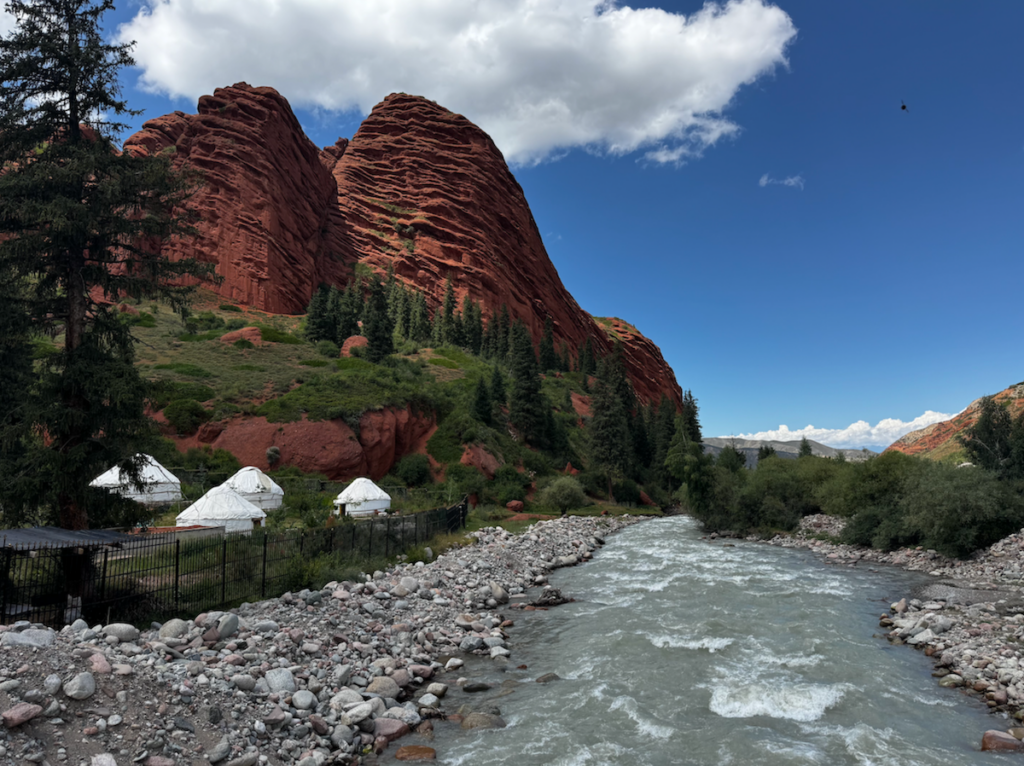
Once in Karakol, we immediately went to our lovely guesthouse, Matsunoki, run by a Japanese family. The house had a warm, wood-filled interior, and our room had huge windows overlooking greenery. Karakol is a base camp for many hikers, so there were plenty of mountain maps and hiking routes available for guests.
Day 1 – An easy hike around Jeti Oguz
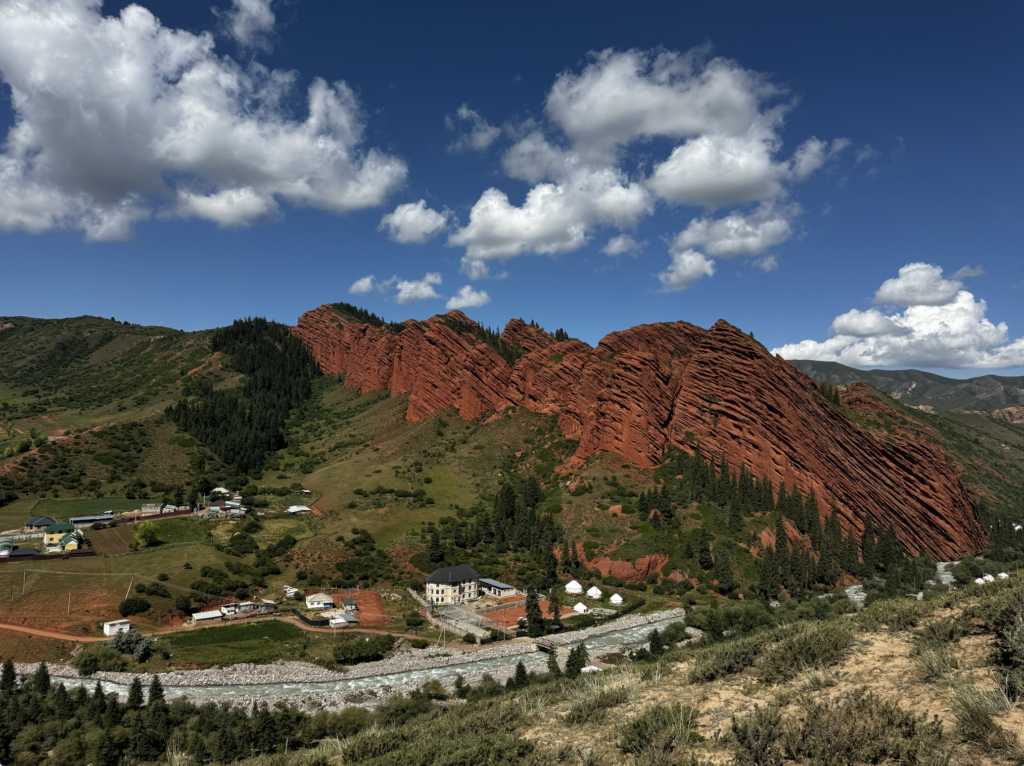
We were craving some nature in Kyrgyzstan, so we were looking forward to spending our first day walking: a hike to visit Jeti Oguz and its red rock formations. By sheer luck, we met a young local woman keen to become a tour guide, who offered to take us around. It turned into a lovely girls’ day out!
Jeti Oguz is only about a 30-minute drive from Karakol, so we arranged for a taxi to take us there and back. This cost about USD 20 in total for the three of us. If you’re going for the day, I recommend stopping first at a mini market in Karakol (I love mini markets, and in Kyrgyzstan there are plenty; they’re such a great way to soak up the local vibe).
There are a couple of food options in Jeti Oguz, but since they’re limited, a picnic is always a good idea. And if you do stop at a mini market, don’t forget to grab a pear lemonade… they became my new obsession while travelling in Kyrgyzstan and Uzbekistan. I miss them now that I’m home!
Kyrgyz legends in Jeti Oguz: Seven Bulls red sandstone rocks
The highlight of Jeti Oguz is the strangely shaped rocks known as the Seven Bulls. These formations, part of the Ala-Too Mountains, are made of red sandstone. Eleonora, our new friend, told us the Kyrgyz legend behind them: two rulers once lived here. One was married to a beautiful woman. The other stole her, and in revenge, the first ruler killed what was most precious to his rival: his seven bulls. I’ll let you ponder the moral of this ancient tale.
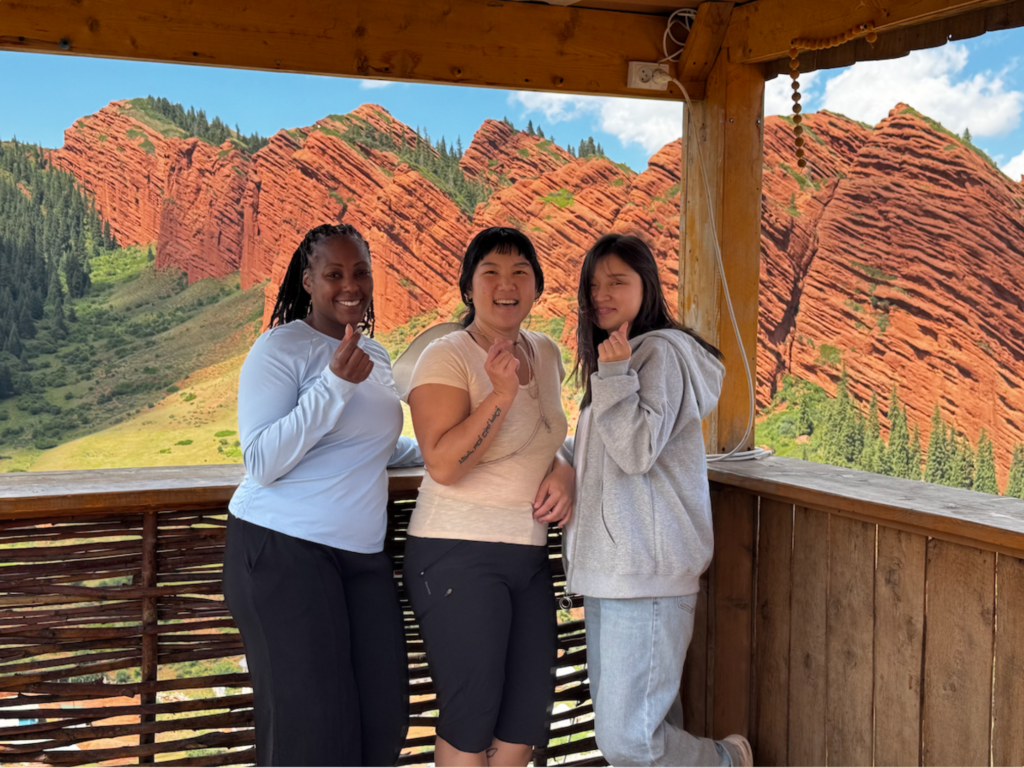
To get the best view of the Seven Bulls, there’s an easy hike up a hill where you’ll even find a small coffee shop and toilets. I had an americano there, and we took hundreds of photos from the top.
Kyrgyz legends in Jeti Oguz: Broken Heart Mountain
The second striking landmark, towering over the river gorge, is called Broken Heart Mountain. Its legend is somewhat similar: two rivals fought over a beautiful woman. Unable to choose between them, she watched them fight to death. Desperate, she took her own life. Again, I’ll let you reflect on the moral.
The mountain (actually two rock blocks) does indeed resemble a broken heart, and I found these stories rather sad and dramatic… much like the landscape, come to think of it.
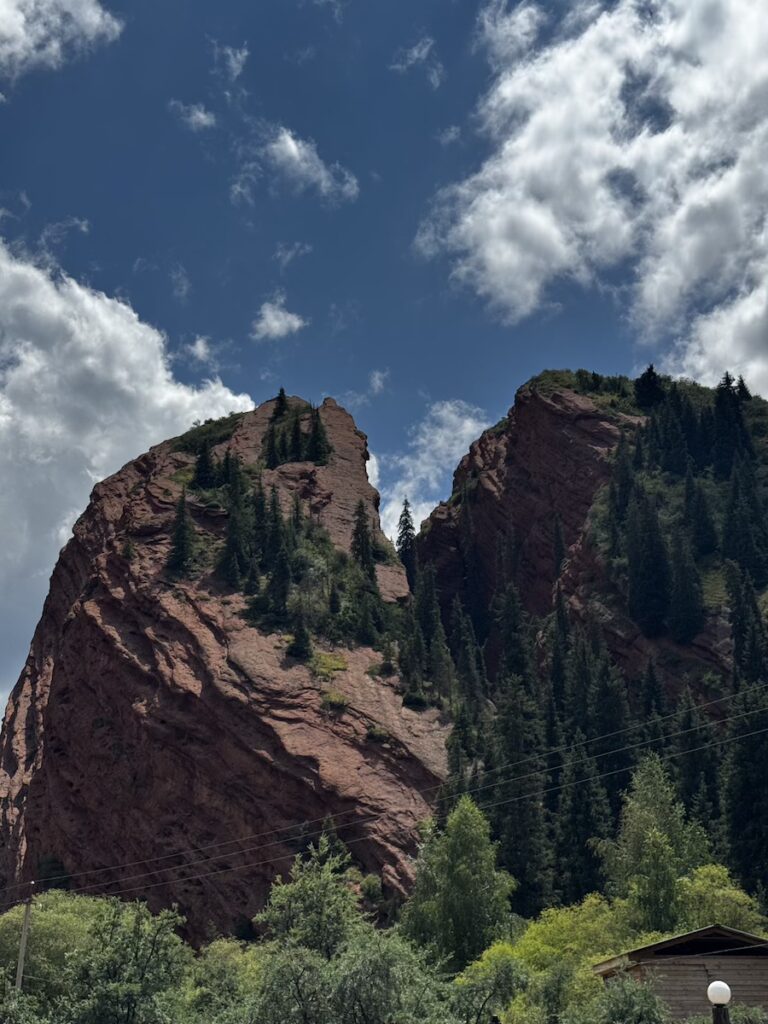
Besides these two famous formations, Jeti Oguz is also a wonderful place to spot wild horses, and I loved being able to observe rural life in the village. It was a beautiful and exciting first day in the Karakol area. If you have more time and a taste for adventure, there are plenty of longer hikes around Jeti Oguz, including overnight stays in yurt camps. Ask your guesthouse if you’re interested in such tours.
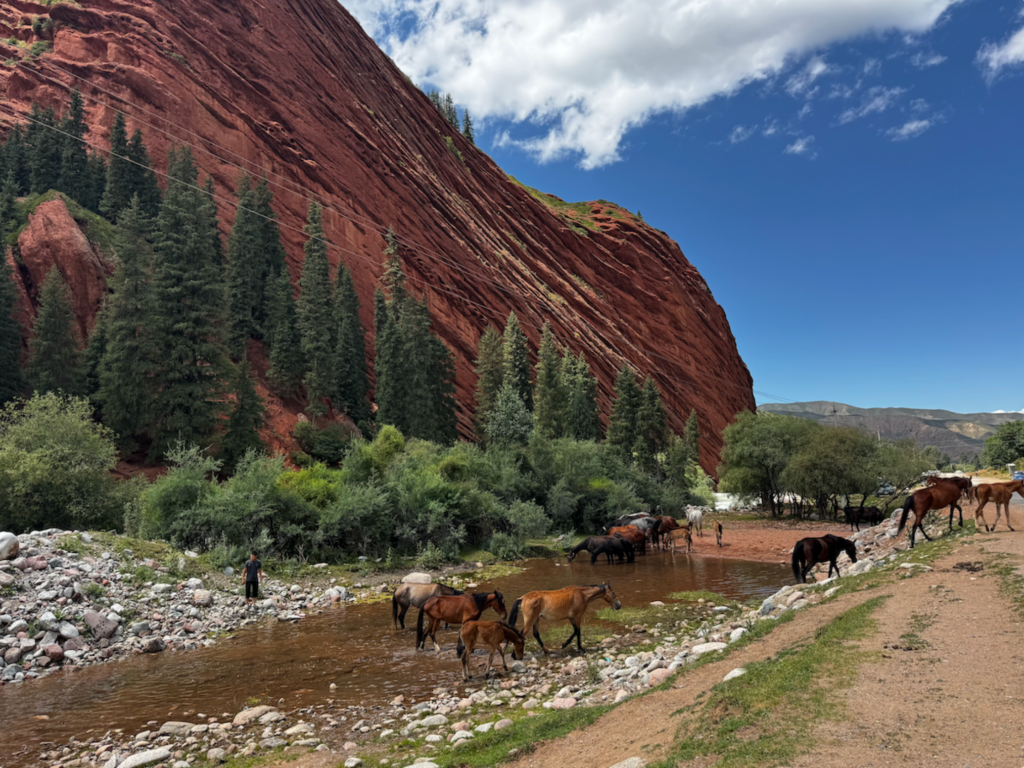
Dinner in Karakol: Dastorkon restaurant
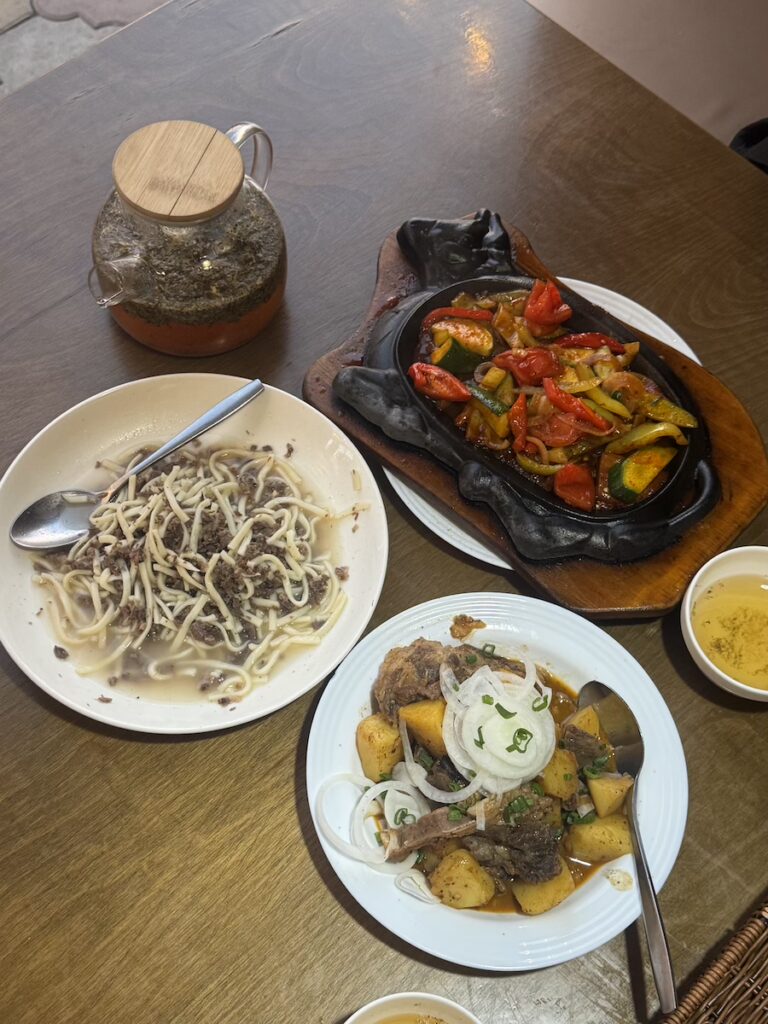
If you have time in the evening, you could also head for the hot springs in Altyn Arashan (we didn’t manage it, but it came highly recommended). So since we stayed in Karakol, we had dinner instead at Dastorkon, a really good, if quite touristy, restaurant Eleonora showed us. We watched a lovely traditional music show there.
We tried two classic Kyrgyz dishes: besh barmak (large sheet of wheat pasta with meat, often horse or beef I believe, topped with onions) and kuurdak (potatoes with meat, a bit spicy).
Day 2 – Discovering Karakol’s landmarks
Karakol is small enough that you can enjoy a relaxed day exploring its few landmarks and soaking up the town’s atmosphere. My eyes kept coming back to the surrounding snow-capped mountain. I was mesmerized by their proximity to the city.
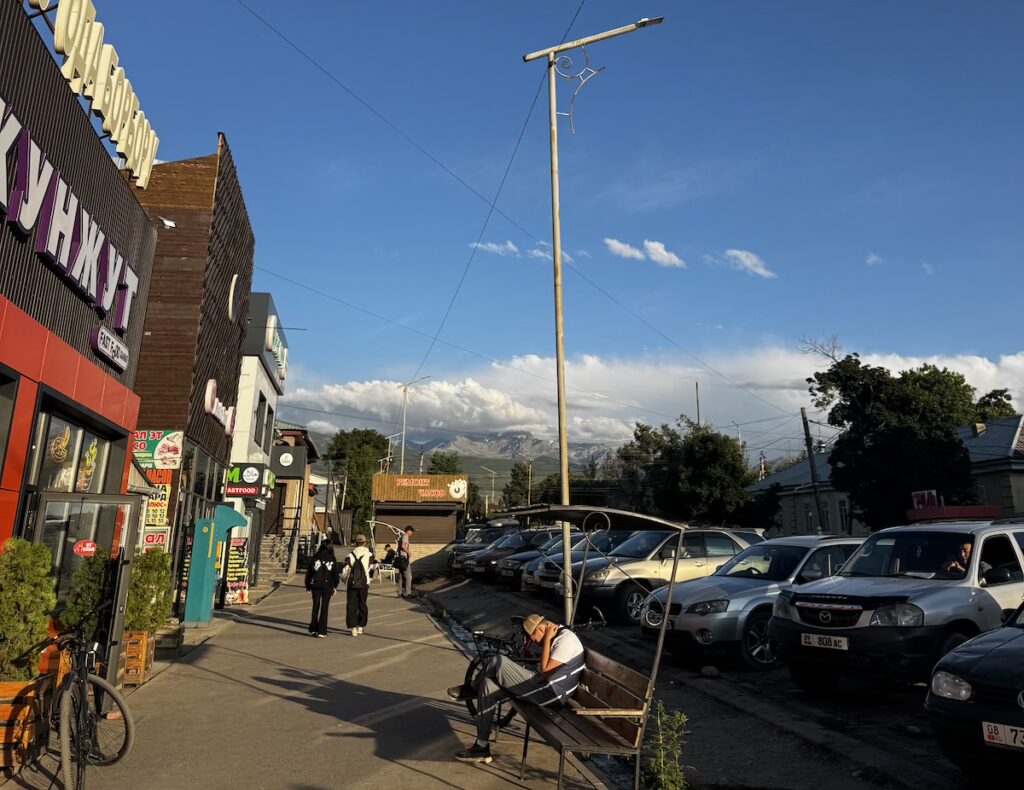
Explore Karakol’s bazaar & Try Ashlan-Fu, Karakol’s signature dish
In the morning, head to the bazaar, where you’ll find everything from food to clothes. Bazaars like this are common in Kyrgyzstan and Uzbekistan, and they’re wonderfully convenient. Don’t hesitate to bargain, especially for clothing.
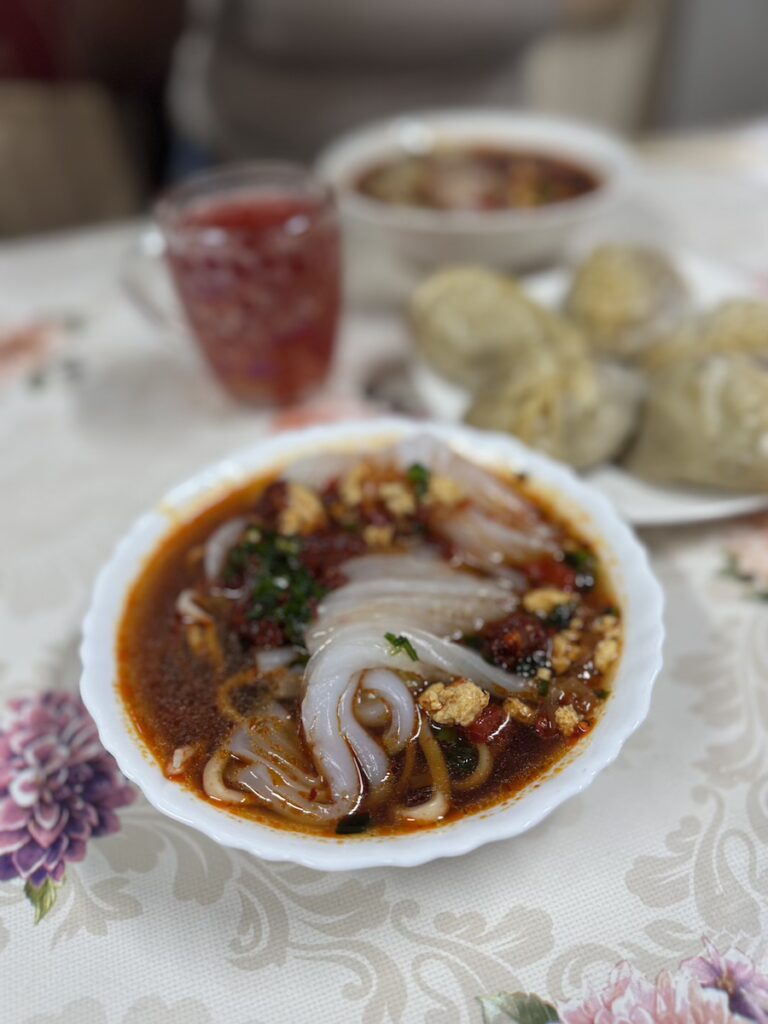
For lunch, try Karakol’s most famous dish: ashlan-fu, cold noodles in a spicy sauce. Pair it with fried bread — they go perfectly together. Note that I’m also a manty fan, so I order those typical dumplings whenever I can.
Karakol’s Holy Trinity Cathedral and Dungan mosque
In the afternoon, take time to wander around town and visit the Dungan mosque, built in the style of a traditional Chinese temple, and the Holy Trinity Orthodox cathedral.
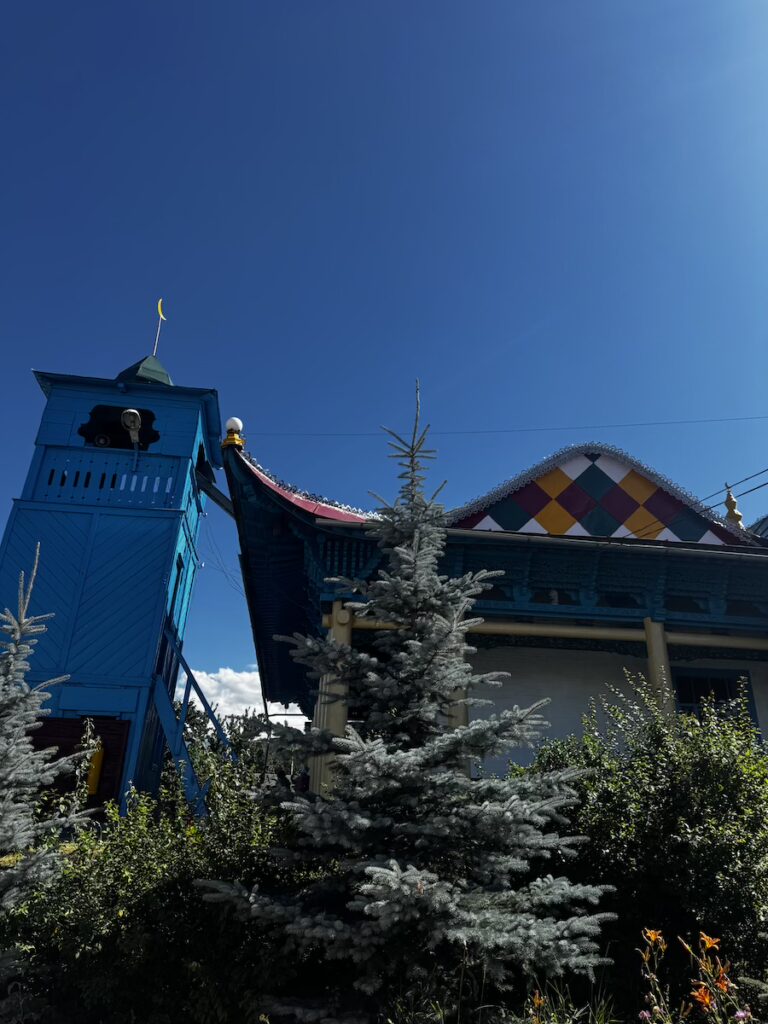
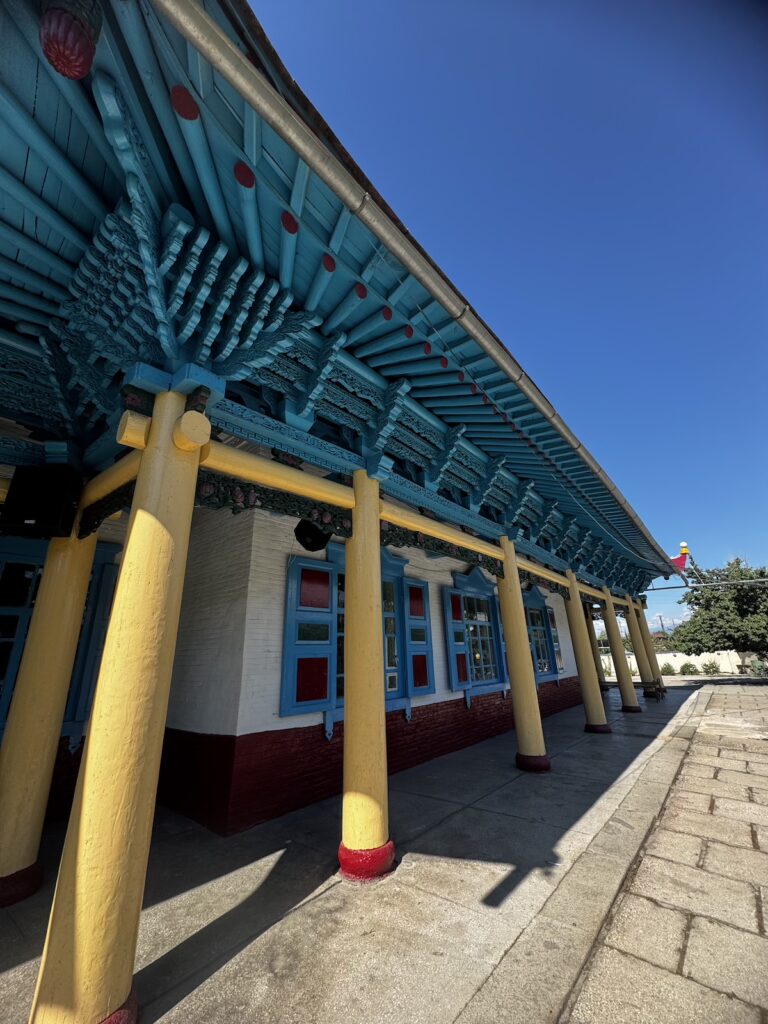
The Chinese mosque, colourful and distinctive in style, was built using an ancient Chinese woodworking technique — no nails or screws, just expert joinery. Most Chinese temples are built this way by skilled craftsmen, and are always remarkable to see. The mosque’s rose garden was beautiful too.
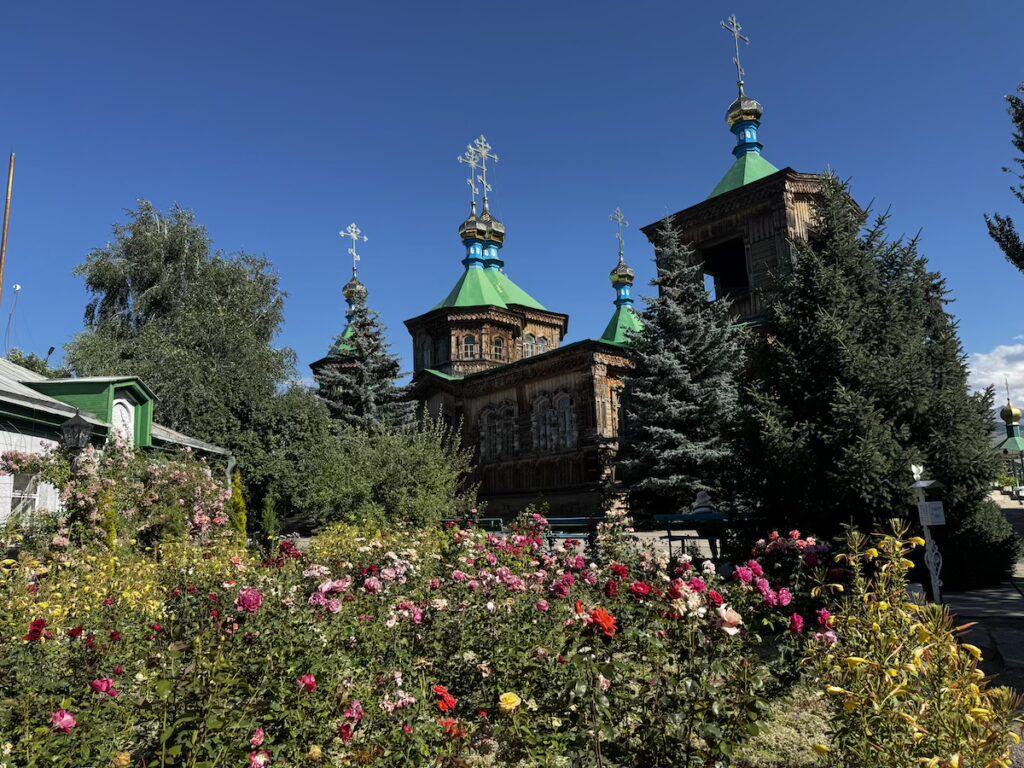
The “Holy Trinity” Orthodox cathedral was no less impressive. I found it peaceful and original, looking like a beautiful chalet-style church. We spent a few minutes inside listening to chants, then took a short walk in the garden.
Coffee & Souvenirs in Karakol
Afterwards, head to a coffee shop. We went to Karakol Coffee, which has a lovely courtyard, refreshing drinks, and cute souvenirs. We spent some time relaxing there and preparing for the rest of our trip.
Right across the street, don’t miss Issyk-Kul Brand Shop for souvenirs — they have beautiful, well-priced local handicrafts. It was the best souvenir shop we came across in terms of selection and quality. That’s also where we had met Eleonora so if you ever come across her, do say hi for me!
To wrap up our two days in Karakol, I’ll say this: we truly appreciated the quietness and simplicity. The town has such a relaxed vibe that my friend and I could easily imagine living there! Human-sized, small yet lively, with plenty of shops, a bustling bazaar, and a good food market, we fell in love with the place.
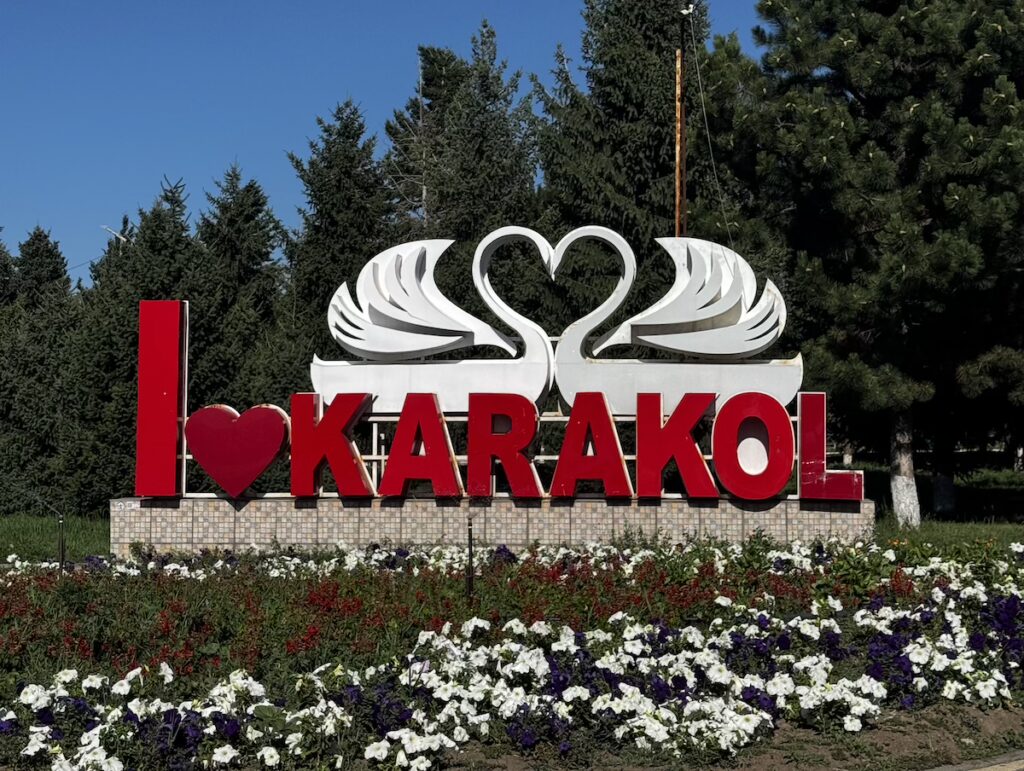

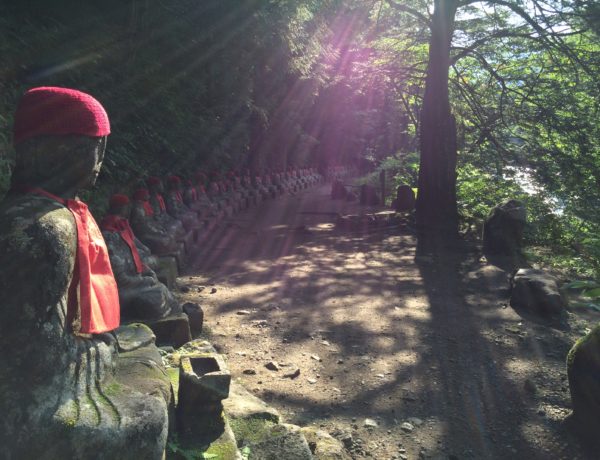
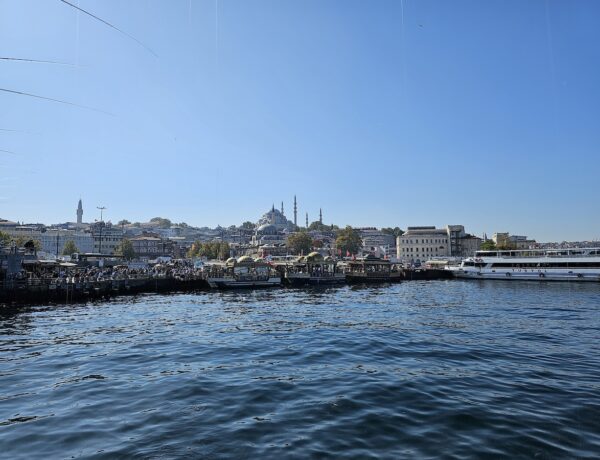
No Comments